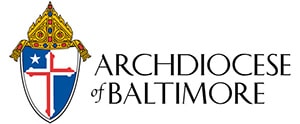Next month the bishops of our country will again consider approving an English translation of those parts of the Bible read publicly in church. They deal with this “again” because, while the Scriptures do not change, our English language does. One has only to read a play of Shakespeare or turn again to the Douay Bible to see how dramatically usage has changed. In 1810, Archbishop John Carroll invited the bishops of Bardstown, Boston and Philadelphia, whom he had just ordained, to remain here in Baltimore with Coadjutor Archbishop Leonard Neale for an informal council. They reviewed and made more precise for the dioceses of the United States the legislation of the Synod of Baltimore of 1791. To this general affirmation they added a new rule for all Catholic Churches in this country. Peter Gilday records that they decreed that Bishop Richard Challoner’s 1582 edition of the Rheims (New Testament, 1582) and Douay (Old Testament, 1609-1610) version would be the official translation for use “in all books of devotion and in reading the Gospel during Mass.” (The Councils of Baltimore, New York, 1932, page 76) When Archbishop James Whitfield convened the First Provincial Council of Baltimore in 1829, the bishops again endorsed Challoner’s translation. However, they also called for a major emendation of the text, a call repeated at the Ninth Provincial Council here in 1858. They recognized that the English language continued to change and the Church needed to respond to this change. Archbishop Francis Patrick Kenrick, who presided at the Ninth Provincial Council, undertook his own translation of the Bible, which he completed before his death in 1863. The Kenrick version did not win general acceptance or the endorsement of the bishops at the Second Plenary Council in 1866, and the Challoner text remained the standard until 1948. In that year the Confraternity of Christian Doctrine published a New Testament translation still based, however, on the Challoner Version. Meanwhile, in 1943, Pope Pius XII issued a landmark encyclical on biblical studies, which was endorsed and expanded upon in the Second Vatican Council’s Constitution on Divine Revelation, completed in 1965. Pope and Council alike encouraged scholars to go back to the original Hebrew and Greek texts in preparing translations for our day. The Latin Vulgate itself, upon which the Douay-Rheims Version was based, was also redone in the light of research into the original text. With an Apostolic Constitution, Pope John Paul II commended the official edition of this new Vulgate in 1986. The Second Vatican Council’s encouragement of a translation based on the original languages led the Confraternity of Christian Doctrine to undertake a completely new translation, know as the New American Bible. Published in 1970, with subsequent confirmation by the Holy See, it has been used since then in the Lectionary with which we are familiar. However, many believe that, in the Gospel passages especially, the translators in their efforts for clarity sometimes failed to capture the dignity and the nuances of the original Greek text. And in the intervening years, the English language has continued to change. This led to the Revised New American Bible translation, which for several years has been discussed as the basis for a Lectionary text and now will come to the bishops for approval. The Lectionary, if it wins approval, will continue the practice of a New Testament translation based primarily on the Greek text. The Old Testament portion of the Lectionary awaits completion by scholars who are now working with the original Hebrew and, with respect to several books, the original Greek. The aim of the translation is stated in the preface to the New Testament text: “The editors have wished to produce a version in English that reflects contemporary English usage and is readily understandable to ordinary educated people, but one that will be recognized as dignified speech….” The preface mentions that:

